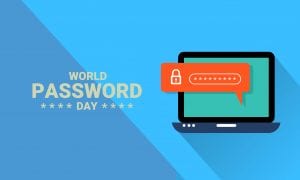How can organizations adopt zero trust security principles?

With traditional approaches to security struggling, zero trust is the next step and this article includes tips to implement this new strategy. In this article, Charles Griffiths, Head of IT and Operations at AAG-IT.com shares his tips for implementing the strategy.
Rolling out zero trust across an entire organization requires control over identities, devices, applications, data, infrastructure and networks. zero trust is not a single product or appliance to buy, but an ideology of security. It involves pulling the traditional perimeter back and combining traditional network access controls with user behaviour analytics (UBA) and micro-segmentation.
If you are planning on adopting zero trust initiatives in your organization, this is what you need to take into account:
Identities
Strong identities are a fundamental part of zero trust, and they’re critical for establishing trust and access within the environment. Strong identities are also important for supporting a zero trust framework because they verify users before accessing systems. One method of enabling strong identity is to leverage multifactor authentication methods such as two-factor (2FA) or mobile authentication.
Multifactoral Authentification
Multifactor or continuous authentication is not a single approach, but several methods that can be deployed together to add levels of trust on top of an identity framework. The three basic approaches to authentication are:

- Single-factor authentication (SFA) is based on something you know, such as a user ID and password or PIN. It’s the most common authentication method used today.
- Multifactor authentication (MFA) is based on something you have, such as a security token, smart card, or mobile device. MFA can be combined with SFA.
- Continuous Authentication (CFA): This is a method of confirming identity in real-time. It’s accurate, convenient and prevents attacks that have been successful in the past because it doesn’t rely on static data.
MFA and CFA are recommended levels of security within a zero trust framework.
Passwordless Authentication
We recommend methods of passwordless authentication to our clients, such as the YubiKey. The Yubikey is a hardware-based device that replaces passwords. It’s a durable, inexpensive and convenient method of strong authentication that can also be used as a USB HID device or NFC.
Network Segmentation
Network segmentation and the ability to implement network controls allow traffic policy to be implemented for each department and application. By taking advantage of micro-segmentation, a network can introduce finer levels of granular controls within the firewall or perimeter to limit access, protect against denial-of-service attacks, etc. NetSeg is a framework that enables this type of authentication framework in open source systems.
Secure ALL devices on your network
Allowing unaudited and unpatched devices onto your network has the potential to cause a lot of damage. In the past, it was fairly easy to block all devices that weren’t part of your network policies, but today’s world involves BYOD (Bring Your Own Device) and other scenarios where users and vendors connect new or unapproved devices to the network regularly. View every user device as a potential threat and limit access to sensitive resources.
READ MORE:
- Securing the supply chain: why it’s time for a zero trust approach
- Why zero trust is Vital – and achievable – for endpoint and IoT security
- Why companies should implement zero trust
- Zscaler is set to be the industry’s first security vendor to integrate active defence into a zero trust architecture
Be specific with user roles and access
Security control should become an integral part of organizational policy. Therefore, roles and access should be as granular as possible, with clear definitions for each role. For a good example of this framework in action, take a look at AWS’s Identity and Access Management (IAM) framework. Thanks to its clear separation between roles and privileges, it has become one of the best examples of an effective identity framework.
For more news from Top Business Tech, don’t forget to subscribe to our daily bulletin!